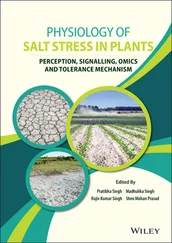Harry Ward - Disease in Plants
Здесь есть возможность читать онлайн «Harry Ward - Disease in Plants» — ознакомительный отрывок электронной книги совершенно бесплатно, а после прочтения отрывка купить полную версию. В некоторых случаях можно слушать аудио, скачать через торрент в формате fb2 и присутствует краткое содержание. Жанр: foreign_prose, Биология, Биология, foreign_edu, foreign_antique, на английском языке. Описание произведения, (предисловие) а так же отзывы посетителей доступны на портале библиотеки ЛибКат.
- Название:Disease in Plants
- Автор:
- Жанр:
- Год:неизвестен
- ISBN:нет данных
- Рейтинг книги:5 / 5. Голосов: 1
-
Избранное:Добавить в избранное
- Отзывы:
-
Ваша оценка:
- 100
- 1
- 2
- 3
- 4
- 5
Disease in Plants: краткое содержание, описание и аннотация
Предлагаем к чтению аннотацию, описание, краткое содержание или предисловие (зависит от того, что написал сам автор книги «Disease in Plants»). Если вы не нашли необходимую информацию о книге — напишите в комментариях, мы постараемся отыскать её.
Disease in Plants — читать онлайн ознакомительный отрывок
Ниже представлен текст книги, разбитый по страницам. Система сохранения места последней прочитанной страницы, позволяет с удобством читать онлайн бесплатно книгу «Disease in Plants», без необходимости каждый раз заново искать на чём Вы остановились. Поставьте закладку, и сможете в любой момент перейти на страницу, на которой закончили чтение.
Интервал:
Закладка:
The general conclusion that the plant stores large quantities of energy may of course be arrived at by simply estimating the enormous quantities of food-material which we obtain annually from agricultural plants.
Modern physiologists have attempted to proceed further than this, however, in their essays to form an estimate of the relations between the available energy in the solar rays and that used and stored in the plant.
If we reflect on such phenomena as the cool shade of a tree, and the deep gloom of a forest, and on experiments which show that an ordinary leaf certainly lets very little of the radiant energy of the spectrum pass through it, it becomes evident that many of the rays which fall on the leaf are absorbed in some form, and it becomes very probable that much of the solar energy, other than that we term light, is retained in the leaf for other purposes than assimilation—or, at least, no other conclusion seems possible in view of all the facts. Engelmann's researches with purple bacteria are almost conclusive on this point, and we may regard it as extremely probable that the plant makes other uses of rays, perceived by us as heat-rays, as sources of energy. Researches on the influences of temperature on assimilation and other functions point to the same conclusion; and Pfeffer and Rodemann definitely state that heat is converted into work in the osmotic cells. And the study of the absorption bands in the spectrum of the living leaf becomes more intelligible in the light of these conclusions. Moreover, the fact that a plant still carries on processes of metabolism when active transpiration has lowered its temperature below that of the surrounding air—and the plant therefore receives heat from the environment—points to similar conclusions.
The importance of the conclusion is immense, for even if the plant had no other sources of energy than the darker heat rays of the solar spectrum, it is clear that it ought to be able to do work.
The above may suffice for the general establishment of the conclusion that the plant absorbs more radiant energy than it employs solely for assimilation, and emphasises our deduction that it is a machine for storing energy.
The question now arises, how is this relatively enormous gain in energy employed by the plant? Our answer to the question is not complete, but modern discoveries in various directions have supplied clues here and there which enable us to sketch in some degree the kinds of changes that must go on.
Not the least startling result is that, important as carbon-assimilation is as the chief mode of supplying energy, it is not the only means that the plant has of obtaining such from the environment, and it is even possible—not to say probable—that energy from the external universe may be conveyed into the body of the plant in forms quite different from those perceptible to our eyes as light.
In the most recent survey of this domain, it is pointed out that we may distinguish between radiant energy, as not necessarily or obviously connected with ponderable matter, and mechanical energy, which is always connected in some way with material substance. All mechanical performances in the plants depend on transformation of some form of these, evident either as actual energy doing mechanical work, or as energy of potential ready to do work.
In so far as molecular movements are concerned, we have the special form of chemical energy. The evolution of heat, light and electricity by plants are instances of radiant energy, and so on.
Many transformations of energy in the plants are due to non-vital processes— e.g. transpiration, warping actions, etc., but we cannot always draw sharp lines between the various cases. Nor can we directly measure the work done in the living machinery; but from the effects of pressures and strains, the lifting of heavy weights, driving of root-tips into soil, osmotic phenomena, etc., it is certain that the values may be very high.
The following classes of processes in living protoplasm and cells may be taken as indicators. First we have transformation of chemical energy, without which continued life is impossible: in many cases— e.g. the processes connected with oxygen respiration—these result in the development of heat. Secondly, we have those remarkable manifestations of energy known as osmotic processes, which depend on surface actions, and with which may be associated other surface effects, such as imbibition, secretion, etc., and in connection with which heat may be evolved or absorbed. It is true the substances which exhibit the properties here referred to may be produced, or placed in position, by chemical energy, or they may be absorbed by roots, etc.; but the proximate energy exhibited by them is not derived from chemical energy, and may be out of all proportion to the chemical energy of the substance or substances concerned. Moreover it is significant to note that a highly oxydised body may develop much osmotic energy, as well as a highly combustible one.
It is of the greatest importance to realise the truth that much work can be, and is done in the living plant, by conversions of energy of potential independent of and out of proportion to the chemical energy available by decomposing the substances concerned; even the heat of respiration may be superfluous here, for the plant may absorb heat from without, and convert it into work.
Tensions often arise in the plant, and do work expressed as movements— e.g. the springing of elastic Balsam fruits, stamens of Parietaria , etc.
Osmotic energy not only results in enormous pressures and tensions, but causes movements by diffusion and diosmosis, and any given osmotic substance which carries this energy with it is not necessarily formed always in the same way in the cell— e.g. glucose may arise from starch, or from carbon-dioxide, or from oil.
Surface-energy is also expressed in the powerful attractions for water exhibited in imbibition, swelling, capillarity, absorption, surface tensions, etc.
Transpiration induces relatively enormous disturbances of equilibrium, and does work in moving water quite independent of chemical energy.
Again, what may be termed excretion-energy, as expressed in the separation of a solid body— e.g. a crystal—from a solution, may be for our purposes regarded separately. Any change in the condition of aggregation of a substance in the plant may result in movements and the overcoming of resistances.
It will be evident from this short digression—and this is the point I wish to emphasise—that in the interval between the securing of a grain of starch, representing so much energy won from the external universe, and the reconversion of this grain into its equivalent carbon-dioxide and water, by respiration, resulting in the loss of the above energy as heat, the starch referred to may have undergone numerous transformations in the living machinery of the plant, and have played at various times a rôle in connection with the most various evolutions of energy.
If we try to picture a possible case, we may take the following. A given starch-granule, after being built up in the chlorophyll-corpuscle, is decomposed, and yields part of itself as glucose, which passes down into other parts of the plant in solution. Part of it is merely re-converted into starch, and temporarily stored: another part passes into the arena of oxydation-processes, the sum of which constitute respiration, and may serve for a time in the molecules of an organic acid: yet another part may be converted into a constituent of the cellulose cell-walls; while part may be brought into play in the reconstruction of protoplasm.
In this last connection a discovery made by Schulze about 1878, and followed up later by Pfeffer, Palladin, and others is of importance. Seedlings growing in the dark, or in an atmosphere devoid of carbon-dioxide in the light, become surcharged with nitrogenous bodies known as amides, formed during the breaking down of the proteids in the destructive process preceding and accompanying respiration: if the seedlings are allowed free access to light and carbon-dioxide, however, the amides disappear. The explanation is that they are combined with some of the materials of the carbohydrates, and again built up into the material of the living protoplasm.
Читать дальшеИнтервал:
Закладка:
Похожие книги на «Disease in Plants»
Представляем Вашему вниманию похожие книги на «Disease in Plants» списком для выбора. Мы отобрали схожую по названию и смыслу литературу в надежде предоставить читателям больше вариантов отыскать новые, интересные, ещё непрочитанные произведения.
Обсуждение, отзывы о книге «Disease in Plants» и просто собственные мнения читателей. Оставьте ваши комментарии, напишите, что Вы думаете о произведении, его смысле или главных героях. Укажите что конкретно понравилось, а что нет, и почему Вы так считаете.












